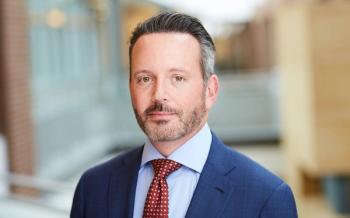Key Takeaways
- Transformation in healthcare is ongoing and purpose-driven. It’s not a fleeting trend but a continuous process rooted in aligning culture, people, and strategy to improve both business outcomes and patient impact.
- Leadership is key to meaningful change. Effective transformation requires visionary leadership that inspires people, fosters a growth mindset, and makes the future feel tangible and achievable.
- Culture and clarity fuel success. Building a strong, inclusive culture and a clear strategic vision enables teams to stay aligned, adapt, and drive sustainable growth, as seen in Melinta’s turnaround journey.
The word "transformation" gets used a lot these days. It shows up in headlines, strategy decks, and mission statements. Some might say it’s lost its meaning from overuse. In healthcare, transformation is something we live every day. It’s ongoing. It’s necessary. When it’s done right, it changes lives.
I’ve been part of this industry for more than two decades, starting my career as a chemical engineer at Merck. I was young and curious, and I felt a real sense of awe walking into work every day. I learned early on what it means to lead with purpose. Those years taught me how science, business, and patient impact come together to create something meaningful. That foundation shaped how I lead today.
When I joined Melinta Therapeutics in 2020, I was brought in to guide the company toward sustainable growth and profitability. That kind of work goes far beyond changing a business model. It requires rethinking culture and how people show up every day. It means helping people understand what’s possible and helping them see themselves in that future.
I can remember just like yesterday when I asked people to join me on the journey to reimagine Melinta and reimagine our approach to our people, our processes, our performance, and our products. We asked ourselves where we were headed and what we wanted to stand for. We created a new vision and mission and redefined the culture with equal emphasis on our people and our results. Once we had clarity, we rolled up our sleeves and got to work. That meant realigning and focusing on the steps that would carry us forward. We developed a strategic plan that served as our guide and gave us space to adjust as we learned. I promised people it would be legendary. This “legendary journey” concept helped everyone see their role in our transformation and understand that every step we took together was vital to our ultimate success. Transformation doesn’t happen in a straight line. It takes direction, adaptability, and a team that’s ready to move forward together.
Earlier in my career, I was part of a core team that led the transformation of Watson Pharmaceuticals into a global company. At the time, Watson was focused on the US market. Through a mix of organic growth and acquisitions, we expanded and began operating globally. That transformation shaped how people thought about their roles. It created a mindset that welcomed scale, pace, and global collaboration.
Transformation often begins by building on what’s already working. The most effective changes I’ve seen layer in new perspectives and create space for others to engage. One of the most valuable lessons I’ve learned is that people need a story they can see themselves in. When you paint a clear and compelling picture of the future, people begin to act in ways that bring it to life.
At Melinta, we’ve used this approach to shape our strategic planning. We created priorities everyone could rally around and invited our team to take ownership. Over time, those efforts built momentum. This year, we stepped back and showed our team what they had accomplished. Over four years, we grew revenue by 85% and achieved sustainable profitability. That didn’t happen by chance. It happened through alignment, focus, and belief.
We’ve also worked hard to build a culture where people feel like they belong. At a recent meeting, a colleague told me they had never felt this way about a company before. They shared how energized they felt by the people around them and how proud they were of the work we were doing. That moment reminded me that transformation is not only about business outcomes. It’s also about how people feel showing up to work each day.
We are paying close attention to how transformation is evolving across healthcare. Advances in artificial intelligence (AI), automation, and digital platforms are changing how we work and how we deliver care. McKinsey estimates AI could create up to $360 billion in annual savings for the US healthcare system. These tools present new ways to approach efficiency and care delivery. We have to ask ourselves how to embed innovation into our culture and our work in a way that creates efficiencies, creativity, and most importantly, patient impact.
Transformation also requires a global lens. Every region has its own systems and challenges. I often return to the idea of “think global, act local.” That mindset helps ensure strategies are built for scale while remaining relevant to local needs. When we expanded Watson internationally, we had to learn how to lead teams across time zones, regulations, and cultures. That experience shaped how I think about leading in complex environments.
This kind of thinking is essential in the life sciences. Product development takes time. Strategic planning needs to account for long-term outcomes. I believe in five-year planning because it gives organizations room to grow with intention. Once you build the strategy, it’s not static. It’s something that needs to be revisited each year to make sure it reflects where we are and where we want to go.
For transformation to take hold, leaders must create space for growth. That starts with mindset. Fixed thinking limits progress. A growth mindset opens possibilities. I’ve seen that when you make the future tangible and break it into achievable steps, people start to believe in it. They move with clarity and confidence.
Leadership plays a central role in that process. At a recent event, Alan Mulally, the former CEO of Ford, shared his experience leading through a $17 billion loss. He said, “The right culture drives the best results.” That line stuck with me. Culture sets the tone for how people work, how they collaborate, and how they lead.
So when someone asks if transformation is just a buzzword, I think about the work we’ve done at Melinta and the work the industry has done for the benefit of patients. I think about the leaders who’ve shaped me. I think about the people who show up every day to build something better. Transformation is not a trend. It’s the work. It’s what leadership looks like when it’s grounded in purpose and built to last.
Christine Miller is CEO of Melinta Therapeutics





